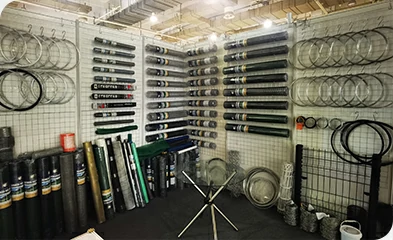 TEL:
+86-13102802206
TEL:
+86-13102802206
 Email:
fencenetting@china.com
Email:
fencenetting@china.com
 Language
Language
 TEL:
+86-13102802206
TEL:
+86-13102802206
 Email:
fencenetting@china.com
Email:
fencenetting@china.com
 Language
Language


Understanding Lockwire Essential for Safety in Engineering
Lockwire, often referred to as safety wire, is a critical component in various engineering applications, particularly in the aerospace, automotive, and industrial sectors. Its primary purpose is to prevent fasteners, such as bolts and nuts, from loosening due to vibration and other dynamic forces that may be present in operating machinery. While it might seem like a simple piece of wire, the role it plays in ensuring safety and reliability in engineering cannot be overstated.
The Importance of Lockwire
In fields where precision and safety are paramount, such as aviation and rocket propulsion, fastening components securely is crucial. Conventional locking mechanisms, like thread-locking adhesives or star washers, can sometimes fail under extreme conditions. This is where lockwire comes into play. By securely twisting the wire around fasteners, it prevents them from loosening, thereby ensuring the integrity of assemblies.
Lockwire is typically made from stainless steel or other corrosion-resistant materials. Its durability is essential, especially in environments that experience extreme temperatures or exposure to chemicals. The wire must be not only strong but also pliable enough to allow for proper installation without breaking. The most commonly used gauges for lockwire range from 0.020 to 0.041 inches, depending on the application and the size of the fasteners involved.
Installation Techniques
Using lockwire requires some skill and knowledge about proper installation techniques. The wire must be threaded through the holes of the fasteners and twisted to create a secure locking mechanism. Generally, the lockwire is installed in a manner that pulls the fasteners together rather than apart, which aids in maintaining their tightness under stress.

One common method is called double wire locking,” where two fasteners are connected with a single piece of lockwire, enhancing security. The wire must also be tensioned properly; too loose, and it won't provide the necessary resistance, while too tight can lead to damage to the fasteners or surrounding components.
Regulations and Standards
In many industries, especially aviation, the use of lockwire is not just recommended but required. Various governmental and industry standards outline the specifications for lockwire, including its material composition, gauge, and installation procedures. For instance, the aerospace industry follows guidelines from organizations such as the Federal Aviation Administration (FAA) and the European Union Aviation Safety Agency (EASA), dictating the use of lockwire in critical applications.
The adherence to these standards is vital, as failure to properly secure fasteners can lead to catastrophic outcomes, including mechanical failures, accidents, or loss of life. Inspections often include checks for lockwire integrity to ensure that all fasteners are secure before any machinery is operated.
Conclusion
Lockwire serves as an essential safety measure in a variety of applications, providing assurance that fasteners will remain secure despite challenging conditions. Its importance can be seen in industries where failure is not an option, highlighting the balance between simplicity and the critical role it plays in engineering safety.
In understanding and employing lockwire correctly, engineers and technicians can enhance the safety and reliability of machinery, ultimately contributing to the overall efficiency and performance of their operations. As technology advances and new materials are developed, the use of lockwire may evolve, but its fundamental role in securing fasteners will remain vital for years to come. Whether it’s in aerospace, automotive industries, or industrial machinery, the humble lockwire continues to be a linchpin in the realm of mechanical engineering, ensuring that components stay intact under pressure.